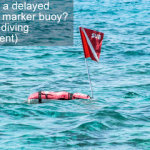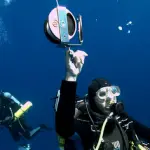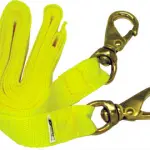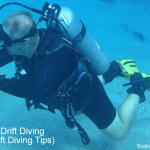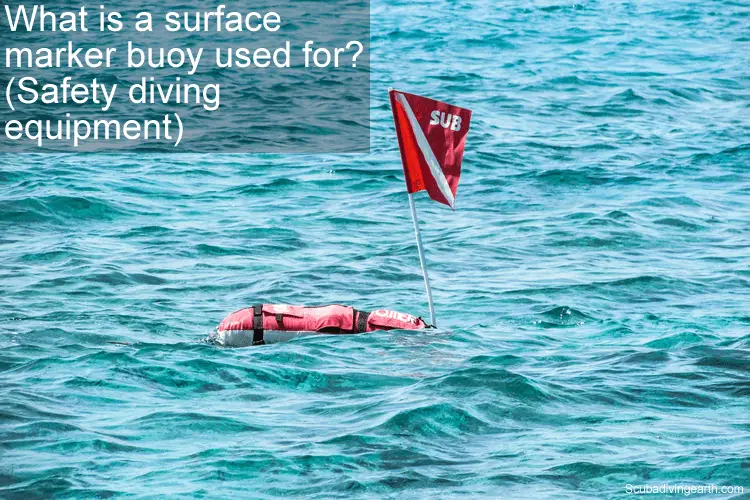
What is the purpose of a surface marker buoy?
If you’ve not yet used a surface marker buoy, you are probably wondering what one is and what it’s used for. An SMB or Blob is considered to be safety equipment for scuba diving, especially on drift dives.
So what is a surface marker buoy used for? A surface marker buoy is a buoy used by scuba divers to indicated their position to people on the surface. A surface marker buoy (SMB, dive float or blob) floats on the surface for the duration of the dive and is connected by a nylon line to a reel the diver holds. SMBs are mostly used for safety during drift dives.
The best way to do more diving and to practice using your delayed surface marker buoy, is to book yourself on a scuba diving liveaboard. You can check the latest and best deals on liveaboards using the following window:
What is a surface marker buoy used for in more detail?
Not to be confused with a delayed surface marker buoy (DSMB), a surface marker buoy is used for the duration of your dive. Surface marker buoys are mostly used during drift dives and indicate the position of the diver to the skipper of the dive boat.
More Reading: What is a delayed surface marker buoy? (Safety diving equipment)
As with all dives, at the beginning of a drift dive the skipper (in conjunction with the dive master) will plan the dive. With regards to drift dive planning, they will insist on all divers using a surface marker buoy. This will usually always be the case if there’s a current running.
This decision is for the diver’s safety. It will help the skipper of the dive boat to follow where the divers ‘drift‘ to.
More Reading: What is Drift Diving (+20 Drift Diving Tips)
How to use a surface marker buoy
For each buddy pair of divers, only one surface marker buoy is used. This is to avoid the lines between buoys becoming entangled. See surface marker buoy tips of use below.
If you’ve never used an SMB before, it’s best to dive with someone else who has. This is so they can show you how to use one properly.
Once you’re ready to descend, un-clip your SMB from your equipment. As you dive down from the surface, let the line out slowly to allow you to descend.
As noted below in SMB tips, don’t let out too much line. If you do, this will make it more likely for line tangles. But equally don’t keep the line too tight, as this may cause other problems.
More Reading: Essential Scuba Diving Equipment (What Do You Need To Start Diving?)
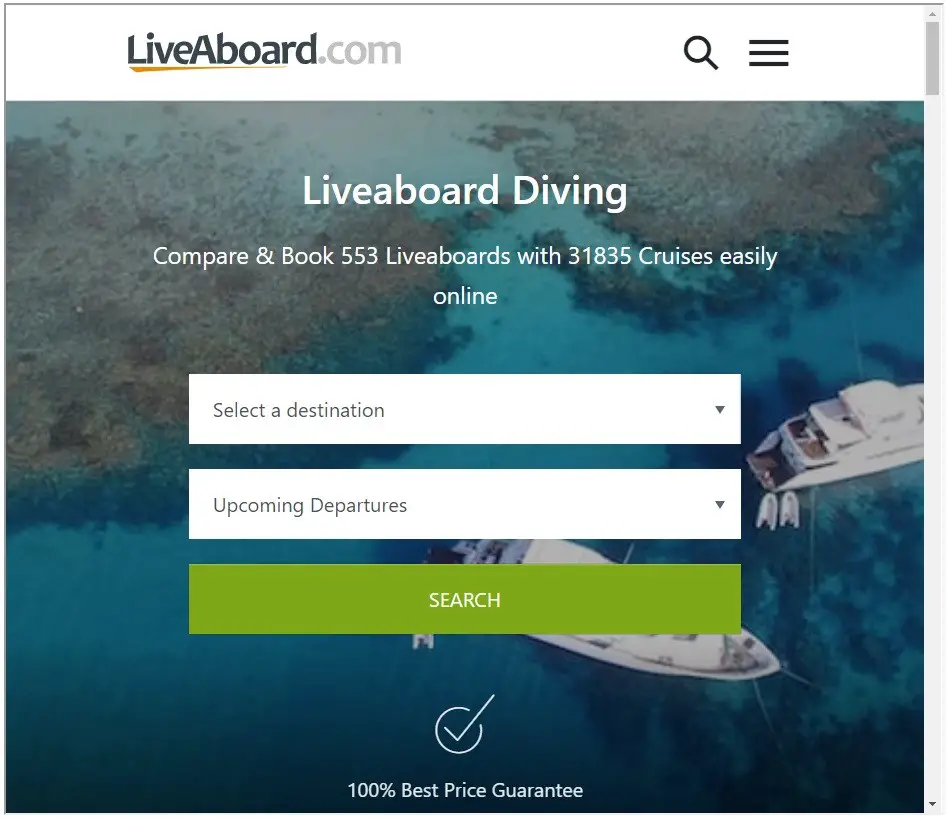
Surface marker buoy tips of use
These are a few handy tips when you use a surface marker buoy for the first time.
SMB tips for use
- Decide before your dive which of you as a buddy pair is to be responsible for the surface marker buoy.
- Before the dive, make sure the reel containing the line for the surface marker buoy is free-running. Plus make sure the line doesn’t have any knots.
- Make sure the buoy is fully inflated before you jump into the water from the dive boat.
- It’s recommended practice on a drift dive for your buddy who’s not taken responsibility for the SMB to have a delayed surface marker buoy (DSMB). See below for what a DSMB is.
- If you’re the diver responsible for the SMB, be aware of obstacles underwater that the line connecting you to the buoy on the surface could get tangled with. For example, swim around rather than under any underwater arches.
- Be careful not to let out too much line so that the buoy is too far behind you. Ideally you are looking to create a 45° angle between the line and the dive depth you are diving at.
- Don’t dive too close to other dive buddy pairs. This will avoid your line getting entangled with another diver’s SMB line.
- Be aware of swell when diving using an SMB. You may need to release a bit more line to accommodate the swell. This will avoid you being lifted up each time the buoy goes over a swell.
- At the end of the dive, use the SMB to slowly ascend to the surface. Where appropriate use the SMB line to stop for decompression stops or safety stops.
More Reading: How Deep Can You Dive Without Decompression (No Decompression Stop Limits)
Extra safety tips for SMB use
A few more safety tips for using a surface marker buoy.
- Don’t clip your surface marker buoy to your equipment during the dive. If the line gets entangled in something on the surface (let’s say a rogue boat that ignores the fact there are scuba divers below), you may end up being dragged along behind or be brought to the surface quickly by this entangled boat!
- If you get separated as a buddy pair, always come to the surface right away. As the responsible diver for the delayed surface marker buoy, use this to come to the surface safely. If you aren’t responsible for the SMB, deploy your DSMB and use this to come to the surface so the boat skipper can see you in the current too.
- Don’t enter a wreck when using an SMB as the line may get tangled in the wreck.
More Reading: How do I get a dive buddy? (5 easy ways to find a dive buddy)
Why is an SMB used for safety?
If you imagine there are say ten divers on a dive boat. Let’s say that all ten divers jump into the water at roughly the same time and descend on their dives within a 5 minute window.
If there’s a current running, these divers will immediately be moving in the water in the direction of the current. On many occasions this current can be relatively strong.
Once the divers leave the surface, it’s extremely difficult for the skipper of the dive boat to know where the divers are. On a dive where there’s no current this isn’t a problem, as most divers will come back to the surface close to the dive boat and will make their way back to the boat.
However, with drift diving this isn’t the case. Depending on the strength of the current, the divers may end up quite some distance from where they first left the surface. Without an SMB it would be almost impossible to know where the divers are.
In the UK for example, there’s quite often a swell, which means that if a diver surfaces too far from the dive boat, it may be difficult or impossible to spot the diver. This is why a surface marker buoy is key scuba diver safety equipment on a drift dive. The boat skipper can follow along with the divers by following the ‘Blobs’ or buoys on the surface.
More Reading: 26 Rules For Safe Scuba Diving (Tips To Become a Better Diver)
What’s the difference between a surface marker buoy and a delayed surface marker buoy?
Earlier in this article I mentioned a ‘Delayed Surface Marker Buoy‘ or DSMB or ‘Safety Sausage‘.
The main difference between a surface marker buoy and a delayed surface marker buoy is that an SMB stays on the surface for the duration of the dive. Whereas the DSMB or safety sausage is taken down on the dive and only deployed at the end of the dive.
I hope you enjoyed this article about what is a surface marker buoy used for
I’d love to hear from you. Tell us about your adventures of diving and snorkeling, in the comments below. Please also share your photos. Either from your underwater cameras or videos from your waterproof Gopro’s!
If this article hasn’t answered all of your questions. If you have more questions either about snorkeling or scuba diving (or specifically about what is a surface marker buoy used for), please comment below with your questions.
There will also be many more articles about scuba diving (and snorkeling) for you to read and learn about these fabulous sports.
Have fun and be safe!

